Commercial Recessed Can Lights: Specifications, Applications, and Energy Efficiency Standards
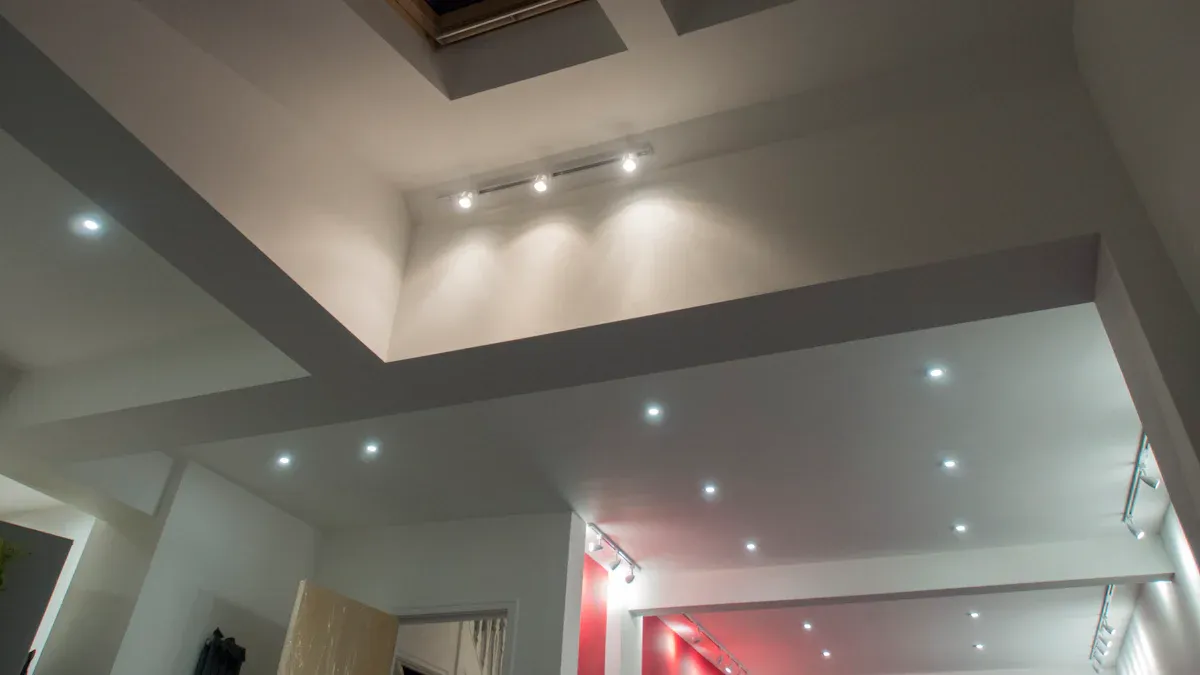
Commercial recessed can lights are a modern choice for businesses. These lights go into the ceiling. They look neat and save space. More people are buying recessed lighting now, as you can see below:
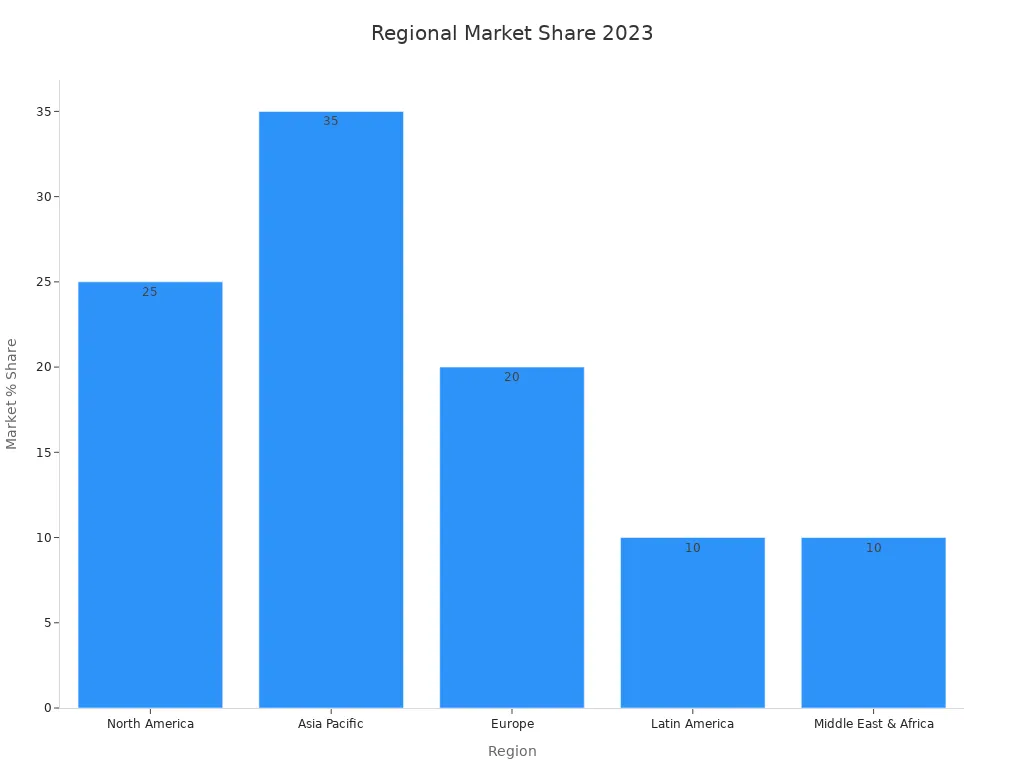
Businesses pick commercial recessed can lights to save energy. They also help meet tough energy rules. LED lighting systems use up to 75% less energy than old lights. Many projects use IC-rated fixtures for safety and better results. IC ratings, Home, About Us, Product, and Led Light all matter when choosing lights. Recessed lighting helps offices, hotels, and malls feel nicer for people.
LED lights in recessed fixtures can work for 50,000 hours.
Human-centric LED lighting can help workers do 6% better.
IC-rated recessed can lights help with safety and saving energy.
Key Takeaways
Commercial recessed can lights use less energy. They look tidy and last a long time. This makes them great for offices, stores, and hotels.
IC-rated downlights make spaces safer. They can touch insulation without danger. They lower fire risks and stop air from leaking. This helps save energy.
LED technology in recessed lights uses much less energy. It can cut energy use by up to 80%. These lights can last up to 50,000 hours. They also cost less to take care of.
Smart controls and dimming options help save even more energy. They let businesses make lighting comfortable for everyone.
Following energy rules like Energy Star, Title 24, and IECC is important. It keeps people safe and saves money. It also helps buildings be better for the environment.
Commercial Recessed Can Lights
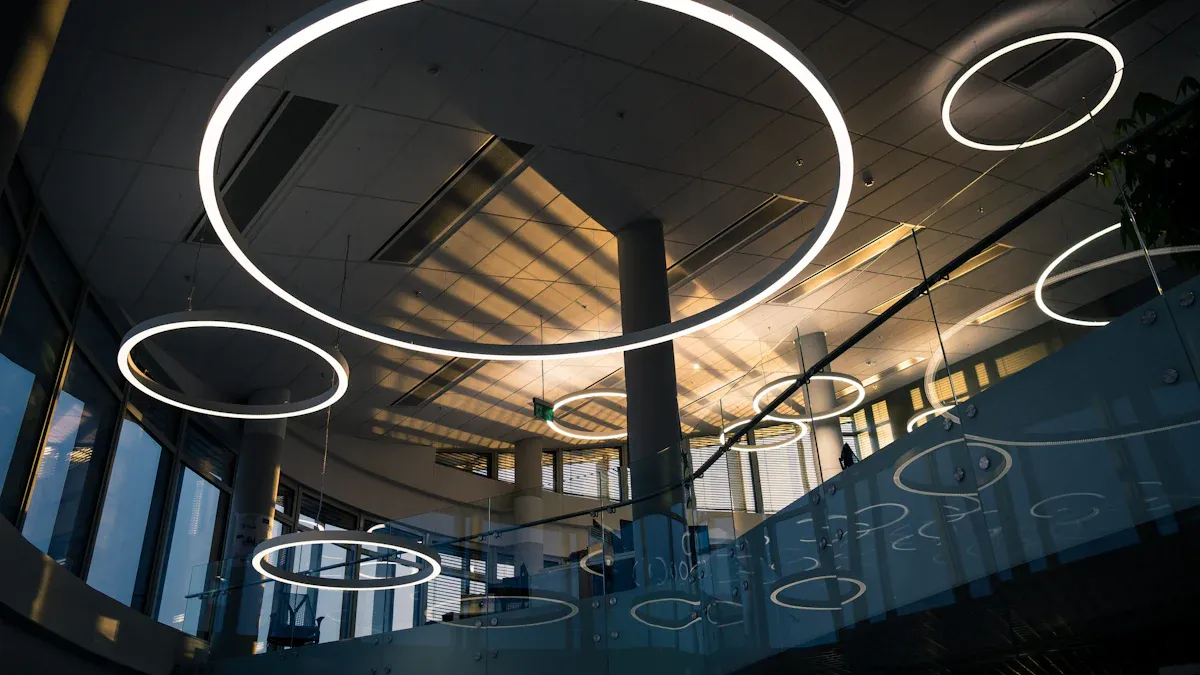
What Are They?
Commercial recessed can lights are a kind of downlight. They are put above the ceiling. This makes rooms look clean and modern. These lights are also called recessed downlights. They sit flat with the ceiling. Offices, stores, and hotels use them a lot. The wires and housing are hidden. You only see the trim and lens. This style looks simple and neat. It spreads light evenly in big spaces.
North America is the top market for these lights. This is because of strong rules and lots of building. Europe cares about being green and new ideas. Asia-Pacific is growing fast. More cities and a bigger middle class help this growth.
Region | Market Trends and Drivers | Regional Differences and Characteristics |
|---|---|---|
North America | Leads the world in sales. People know a lot about these lights. There are many buildings and home updates. | There are strong rules for saving energy. The U.S. and Canada buy the most. There is a lot of building and fixing homes. |
Europe | Grows fast and cares about being green. There are strict rules. | There is money for smart cities and green buildings. People like different things. There are strong laws for new ideas. |
Asia-Pacific | Grows the fastest because more people live in cities. More people have money. | People buy in new ways. China and India are big markets. Growth comes from electronics, cars, and clean energy. |
South America | Can grow because more people live in cities. The economy is changing. | There are still money problems. Brazil and Argentina use more tech and go digital. |
Middle East & Africa | Growth comes from more cities, new jobs, and more people buying things. | Rich Gulf countries build a lot. Banking, phones, building, and oil are growing. |
Key Features
Recessed downlights have many good features for businesses:
IC rated downlights are safer. They can touch insulation and not catch fire.
Many use aluminum frames. This helps them last longer and stay cool.
You can use recessed lights in new or old buildings.
IC rated downlights stop air from leaking. This saves energy.
Some downlights can dim or be controlled by smart systems.
They come in many sizes and styles for different ceilings.
More people want recessed lighting each year. By 2025, the market could be worth $875 million. People want lights that save energy and look nice. New building styles like simple, built-in lights. This makes recessed downlights very popular.
LED Technology
LED technology changed recessed lighting a lot. LED recessed lights use less power than old bulbs. They can save up to 80% on energy bills. Both can and canless LED downlights are bright but use little energy. IC rated LED downlights last much longer than old bulbs. They can last from 15,000 to 50,000 hours. This means you do not need to change them often. It also costs less to keep them working.
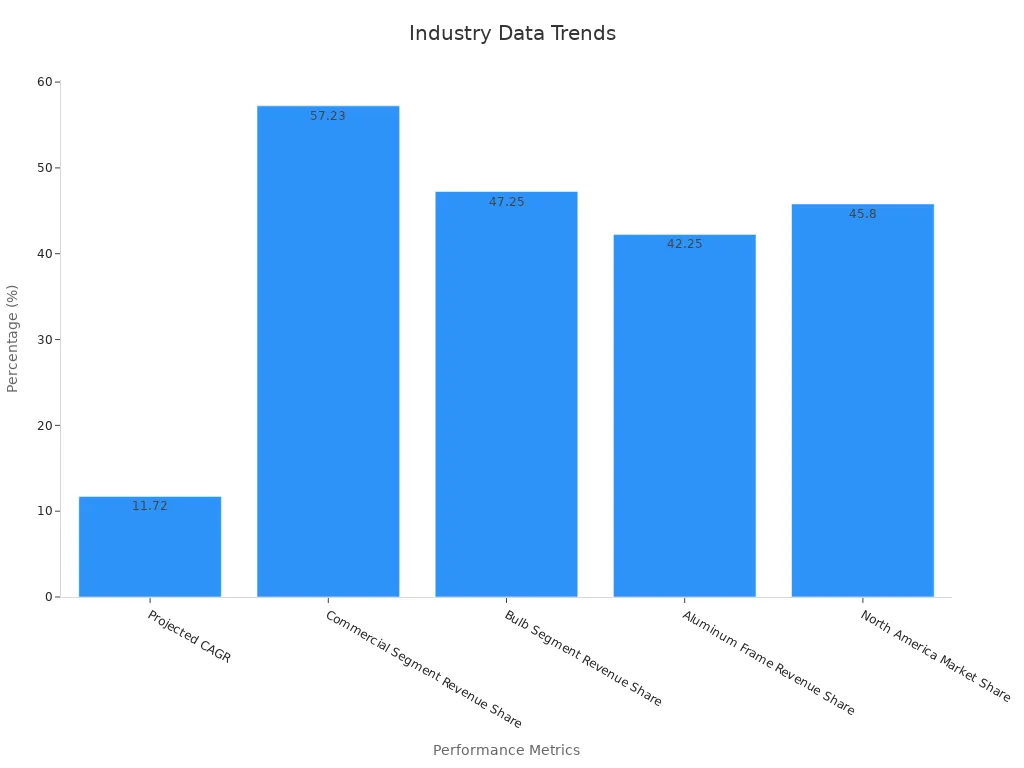
LED downlights do not break easily. They can handle bumps and shakes. This is good for busy places. IC rated downlights have heat sinks and sensors. These keep the lights cool and safe. This helps them last even longer. All these things make LED recessed lights a smart and green choice for businesses.
Specifications
Types and Sizes
Recessed lighting comes in different types and sizes. The most popular downlights are 4-inch and 6-inch. The size means how wide the housing is, not the trim. Bigger 6-inch downlights are good for tall ceilings or big rooms. Smaller 4-inch downlights fit regular ceilings or highlight certain spots. Traditional recessed lighting needs space between ceiling joists to fit. Canless downlights are very thin and fit in small spaces. This makes them great for remodels with little room.
Type | Typical Size | Installation Depth | Best Use Case |
|---|---|---|---|
6-inch | Deep | New construction, large rooms | |
Canless Downlights | 4-inch, 6-inch | Ultra-thin | Remodels, tight ceilings |
How many downlights you need depends on the room size and ceiling height. Bigger housings spread light wider, so you need fewer lights. Smaller downlights have narrow beams, so you may need more for even light. These choices depend on what works best, not strict rules.
IC-Rating and Safety
IC rated downlights are important for safety in commercial recessed can lights. IC stands for "insulation contact." These downlights can touch insulation and not cause a fire. They are tested to work safely under 8-1/2 inches of insulation. They must stay cool and not go over heat limits set by UL 1598. If the wrong lamp is used, the thermal protector must turn off and on within three hours to stop overheating.
Feature | IC Rated Downlights | Non-IC Rated Downlights |
|---|---|---|
Insulation Contact | Safe for direct contact | Needs 3-inch clearance |
Heat Management | Double-can, no vent holes | Single can, vent holes |
Energy Efficiency | Airtight, less air leakage | Prone to drafts |
Fire Safety Standards | Meets UL 1598, NEC codes | Must avoid insulation contact |
Non-IC rated downlights need at least 3 inches of space from insulation. They use air flow to stay cool. If insulation touches them, they can get too hot and start a fire. Building codes say you must use IC rated downlights in insulated ceilings. This keeps people safe and saves energy. Labels on the housing show how much space is needed for safe use. IC rated downlights also help stop air leaks, which saves energy and meets safety rules.
Tip: Always check if the recessed lighting housings are IC rated before putting them in insulated ceilings. This helps you follow safety rules and lowers fire risk.
Wattage and Lumen Options
Downlights come in many wattage and lumen choices. Commercial recessed can lights let you pick wattages like 8.5, 10, 12, 15, 20, 24, 33, 40, and 46 watts. Wattage shows how much energy the light uses. Lumen output tells you how bright the light is. For example, a 6-inch downlight can give 800 lumens at 10 watts, 1,200 lumens at 15 watts, and 1,600 lumens at 22 watts. Bigger 8-inch downlights can reach 2,400 lumens at 30 watts.
Wattage Setting (W) | Lumen Output (lm) | Typical Downlight Size |
|---|---|---|
10 | 800 | 6-inch |
15 | 1,200 | 6-inch |
22 | 1,600 | 6-inch |
12 | 1,000 | 8-inch |
20 | 1,700 | 8-inch |
30 | 2,400 | 8-inch |
Lumens per watt shows how well the light saves energy. Some LED downlights make 200 lumens per watt, so they use less power for the same brightness. Picking downlights with more lumens per watt saves money over time. You can choose the wattage and brightness to fit the room. Retrofit kits make it easy to upgrade to better downlights without changing everything.
Controls and Dimming
Modern downlights can use advanced controls and dimming. Many recessed lights use Pulse Width Modulation (PWM) to change brightness. PWM turns the LED on and off very fast, so your eyes see smooth dimming. This saves energy and keeps the color the same.
Smart controls let you connect downlights to building systems. These systems use Wi-Fi or other wireless ways. You can control the lights with your voice, set schedules, or use apps. Dimming types include DALI, 0-10V analog, and TRIAC phase-cut dimming.
Protocol/Feature | DALI | 0-10V Dimming | TRIAC Dimming |
|---|---|---|---|
Signal Type | Digital, two-way | Analog DC voltage | Analog AC phase-cut |
Addressability | Unique per fixture | Group control only | All fixtures on circuit |
Dimming Range | 0.1% to 100% | 10% to 100% | Variable, may flicker |
Integration | Building automation, sensors | Basic sensor compatibility | Simple residential setups |
DALI gives exact control and feedback for each downlight. Building managers can set scenes, check energy use, and get alerts if a light fails. 0-10V dimming gives smooth, steady dimming in business spaces. TRIAC dimming is common in homes but may not work for all LED downlights. These controls help save energy and make rooms more comfortable.
Applications of Recessed Lighting
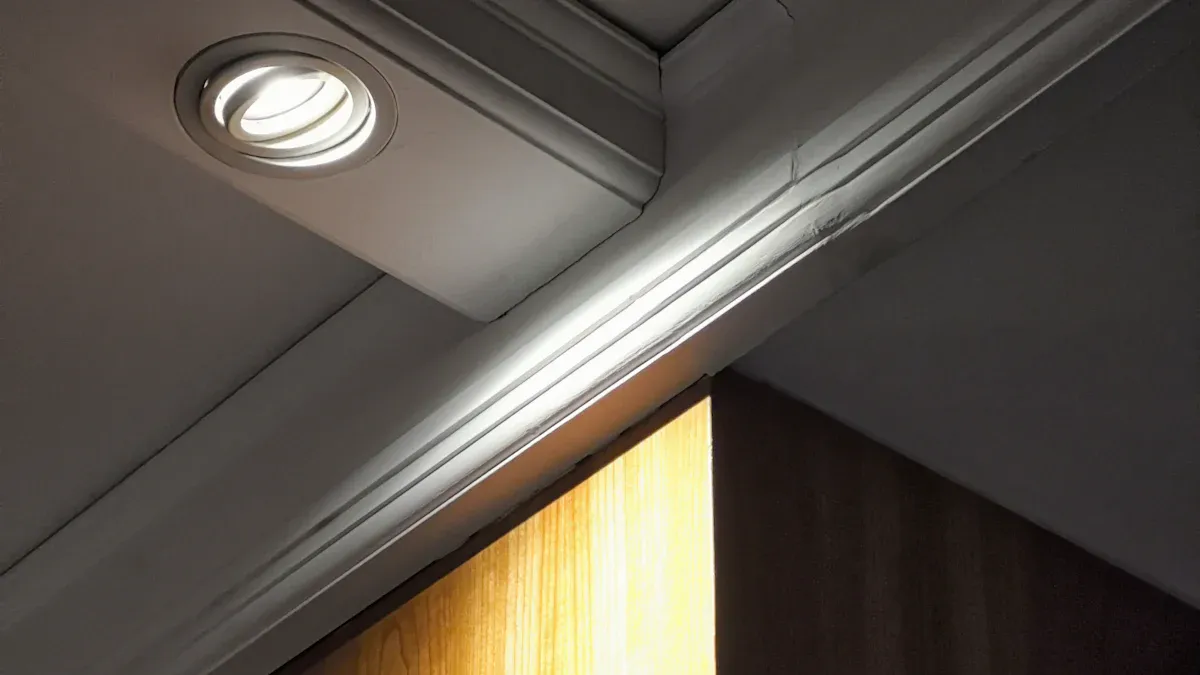
Common Commercial Uses
Recessed lighting is used in many business places. Offices use these lights for general and work lighting. This helps workers see well and keeps their eyes from getting tired. Stores use recessed lighting to make products stand out and make shoppers feel welcome. Restaurants use downlights to set the mood. Fast food places use bright lights, while fancy restaurants use softer lights. Hospitals and clinics need good recessed lighting for patient care and medical work. Schools and colleges use these lights in classrooms and libraries for bright, even light. Hotels put recessed lighting in lobbies and rooms for comfort and style. Factories and warehouses use downlights to help people stay safe and work better. Gyms and sports centers use recessed lighting so people can see well and avoid glare. All these uses show that recessed lighting helps people see, stay safe, and enjoy their time in business spaces.
Installation Considerations
Installing recessed lighting the right way keeps people safe and makes lights work well. Installers must use IC-rated fixtures if there is insulation. This stops fires and keeps the system safe. Recessed fixtures should be UL listed and made with flame-resistant materials. Installers need to plan where each light goes. They should keep lights at least 2 feet from walls and 4 feet apart. Before cutting, they must check for wires or pipes in the ceiling. The same kind of wire as the old system should be used. Installers should leave extra wire for changes later and match wire colors when connecting. Each light must be grounded to stop electrical problems. Installers should use dimmer switches that work with LED modules. This helps save energy and makes the lighting better. After putting in each light, installers should test it to find any problems early.
Tip: Always turn off the power before starting and use a voltage tester to stay safe.
Code Compliance
Following the rules is important for recessed lighting in business places. The national electrical code gives rules for safe wiring and where to put lights. IC-rated fixtures are needed if insulation is around the housing. This lowers fire risk and saves energy. Installers must use thermal and surge protectors for safety. Fixtures should have a power factor of at least 0.9 and an IP rating of 54 or more. Local codes may need permits before you start. The national electrical code also says how to ground lights and how much power each circuit can handle. Following these rules keeps lighting systems safe, legal, and working well. Good code compliance keeps people and buildings safe in all business places.
Energy Efficiency Standards
Energy Star and Certifications
Energy efficiency rules are very important for picking recessed lighting in businesses. These rules help companies use less energy and save money. They also help the planet. Energy Star is a well-known certification for lights. It has tough rules for how lights work, how safe they are, and how much energy they use.
Energy Star certified recessed lighting must follow many rules. These rules include high efficacy, good color, and long life. The Energy Star Downlights V1.0 Specification came out in 2023. It raised the minimum efficacy to 82 lumens per watt. This means only the best lights get certified. Certified lights must turn on fast and dim smoothly with no noise.
Performance Characteristic | Requirement Summary |
|---|---|
Efficiency | |
Light Output | 345-575 lumens minimum, based on size |
Color Quality | CRI of at least 80, R9 > 0 |
Lifespan | At least 25,000 hours (L70) |
Dimming | Smooth, quiet dimming to 20% |
Standby Power | 0.5-1 watt max for sensors |
Warranty | 3-5 years minimum |
Start Time | Full brightness in under 1 second |
Energy Star certified commercial recessed can lights use up to 90% less energy than old bulbs. They also make 70-90% less heat, so air conditioning costs go down. These lights waste less energy as heat, so they are safer and better for businesses. The certification also checks fire safety. Standards like UL 263 and ASTM E119 make sure the lights can resist fire and keep people safe.
Title 20, Title 24, and IECC
Some rules from states and the country help guide how to use recessed lighting in businesses. Title 20 and Title 24 are California’s main energy codes. Title 20 sets rules for how efficient appliances must be, including lights. Title 24 is about saving energy in buildings. It says new and fixed-up buildings must use efficient lights and controls.
The International Energy Conservation Code (IECC) is another big set of rules. It is used in many states and cities in the U.S. The IECC says commercial recessed can lights must meet strict rules for saving energy and working well. These codes often want LED technology, dimming, and sensors to cut energy use.
Standard | Focus | Key Requirements |
|---|---|---|
Title 20 | Appliance efficiency | Minimum efficacy, labeling, testing |
Title 24 | Building energy use | High-efficacy lighting, controls, daylight response |
IECC | National energy code | LED use, controls, power limits, automatic shutoff |
Following these rules helps businesses spend less money and help the planet. Codes like Title 24 and IECC also want smart controls and daylight harvesting. This means lights change based on sunlight and if people are in the room, so energy use goes down even more.
Ensuring Efficiency and Compliance
Businesses must pick recessed lighting that meets or beats all the rules. This makes sure they follow the law and save the most energy. LED technology changed lighting by turning most electricity into light. This cuts waste and helps the planet. LEDs last much longer than old bulbs, sometimes up to 50,000 hours. This means less fixing and less trash.
Modern commercial recessed can lights often have smart controls. These controls let you dim, set timers, and sense motion. Studies show using LEDs with controls can save up to 80% on lighting energy. For example, federal office buildings that switched to LEDs with controls saved 32-33% energy. High-performance offices with daylight dimming controls saved 56% compared to regular lighting.
Note: Using energy-saving lights with smart controls saves energy and makes lighting better and more comfortable for people in the building.
The table below shows how LED lighting is better than old types:
Aspect | Historical Lighting Types | Modern Commercial LED Lighting |
|---|---|---|
Energy Efficiency | High energy use | |
Lifespan | ~1,000 hours | 25,000-50,000+ hours |
Cost Savings | High costs | Lower energy and maintenance costs |
Environmental Impact | High carbon footprint | Lower emissions, less waste |
Technology | Basic bulbs | Smart controls, sensors, IoT |
Many businesses care about being green. By picking recessed lighting that meets Energy Star, Title 24, and IECC rules, companies can use less energy, make less pollution, and help green building goals. The world market for energy-saving lighting is growing because of cost savings, new tech, and stricter rules.
Tip: Always look for certifications and check local rules before putting in new recessed lighting. This keeps things safe, saves energy, and saves money over time.
Picking the right commercial recessed can lights makes buildings safer. These lights work well and help follow the rules. LED downlights save energy and last a long time. This means you do not have to fix them often, so it costs less. They do not get very hot, so fires are less likely. You can put these lights in many places to make sure everyone can see. Always follow local rules and check the lights after putting them in. Keep checking them often to make sure they work right. Emergency lighting and smart controls help keep people safe and save energy.
LED downlights use less power and last longer.
Good installation and regular checks keep things safe and legal.
Smart controls and emergency lights give more safety.
FAQ
What makes commercial recessed can lights different from residential options?
Commercial recessed can lights are made with stronger materials. They must meet strict safety rules. These lights are brighter and last longer than home lights. They work well in places like offices and stores. Many use IC rated downlights for better insulation and saving energy.
How does LED technology improve energy efficiency in recessed lighting?
LED technology uses less energy than old bulbs. Recessed LED lighting gives more light but uses less power. These lights last longer, so you do not replace them often. This saves money and helps the planet in commercial buildings.
Why is IC rating important for recessed lighting housings?
IC rated downlights can touch insulation safely. This stops them from getting too hot or causing fires. Non-IC rated downlights need space away from insulation. IC rating helps lights follow safety rules and saves energy by stopping air leaks.
What should businesses consider for installation and application of downlights?
Businesses need to check what kind of recessed lighting they use. They must follow the national electrical code for safety. Good installation keeps people safe and saves energy. Where you put the lights, insulation, and controls all matter for how well the lights work.
How do energy standards affect the cost and sustainability of lighting fixtures?
Energy standards say lights must use less power. Following these rules saves money over time. Using LED technology and efficient lights helps the planet. Businesses save money and help the earth by picking lights that last long and use less energy.
See Also
Guide To Recessed Lighting Types And Installation Tips
Choosing Efficient Industrial LED Bulbs For Various Uses
Effective Commercial Lighting Solutions And Best Business Practices
Advantages And Selection Tips For LED Industrial Lighting
Energy Efficient LED Indoor Lighting Options For Modern Areas

